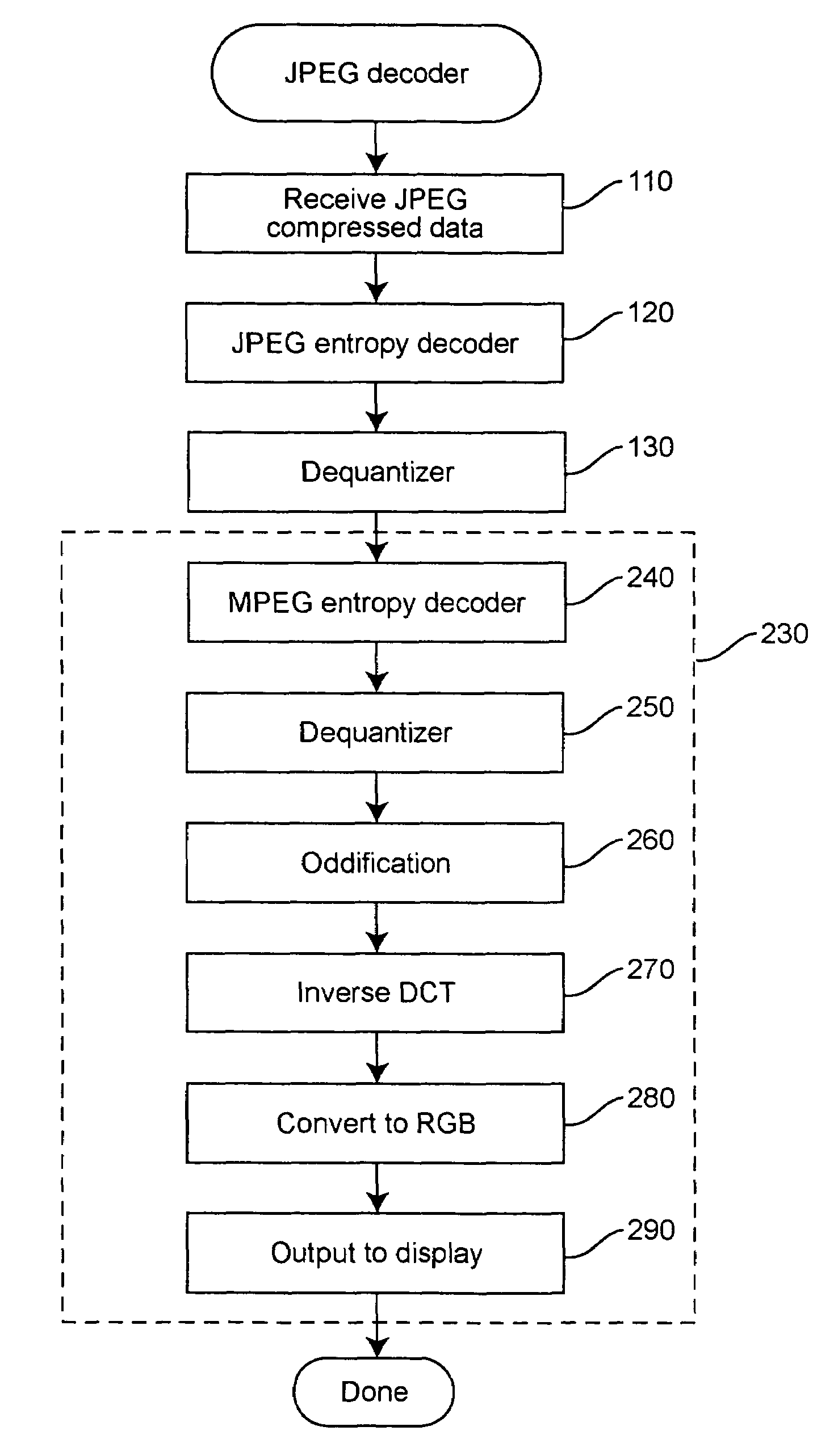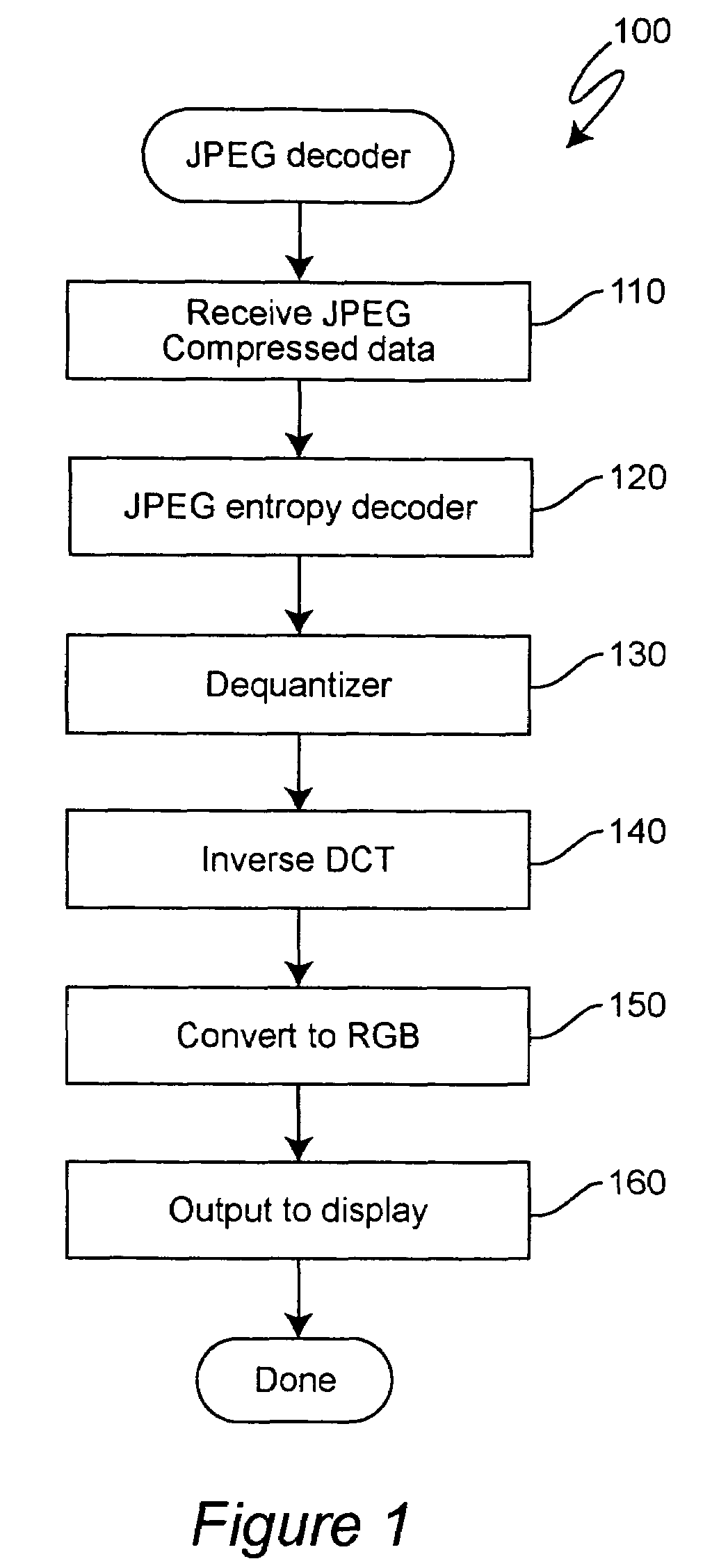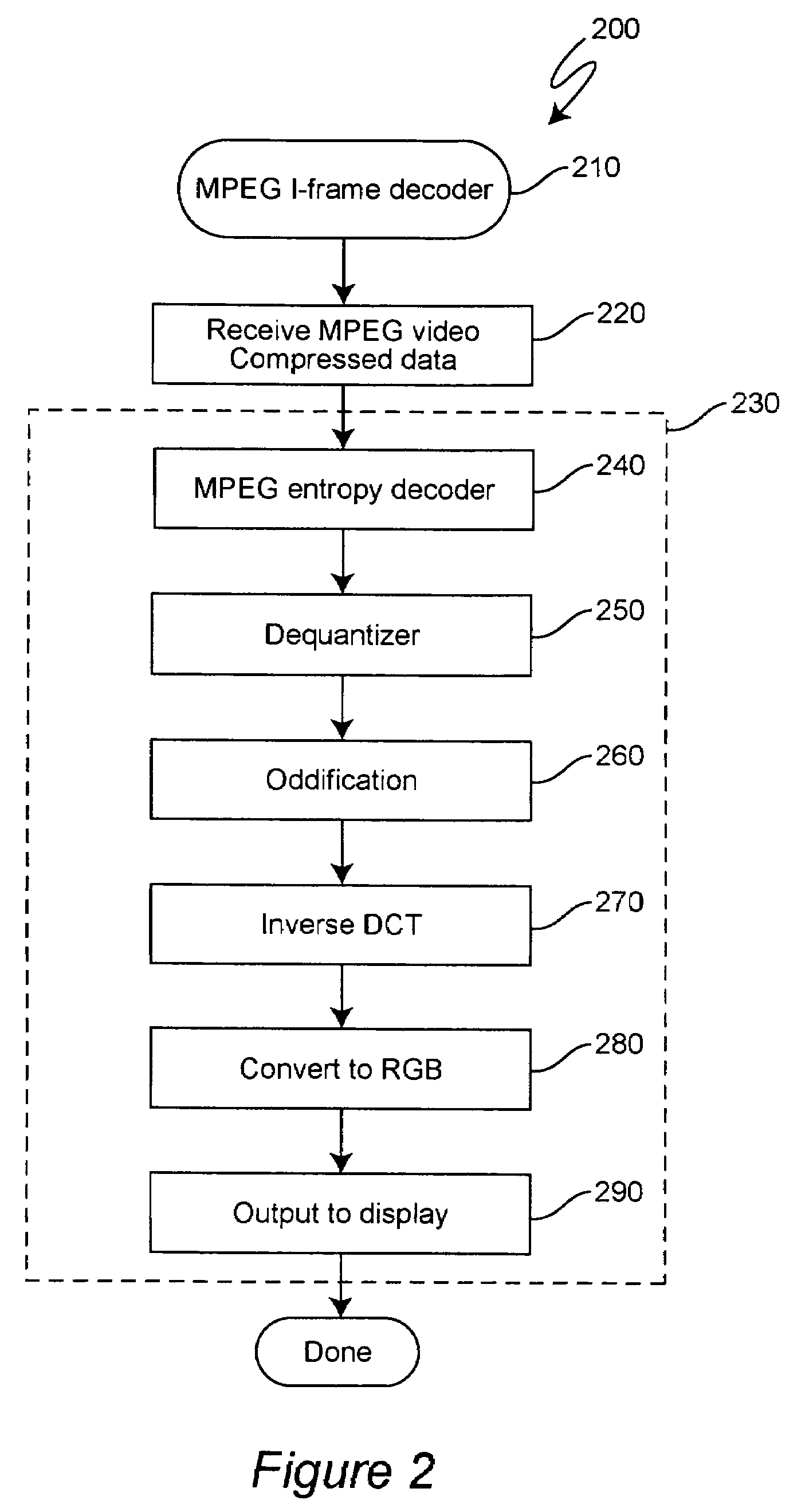Browsing JPEG images using MPEG hardware chips
a hardware chip and image processing technology, applied in the field of data processing, can solve the problems of high processing burden, transmission or processing time and storage capacity, and high image fidelity loss, and achieve the effect of fast browsing, no significant loss of image fidelity, and high quality
- Summary
- Abstract
- Description
- Claims
- Application Information
AI Technical Summary
Benefits of technology
Problems solved by technology
Method used
Image
Examples
Embodiment Construction
[0040]Referring now to the drawings, and more particularly to FIG. 1, there is shown a block diagram of a generalized and simplified JPEG decoder 100. FIG. 2 shows a similar depiction of a generalized and simplified MPEG I-frame decoder 200, for comparison. It should be understood that the depictions of FIGS. 1 and 2 are arranged to convey an understanding of the concepts of the invention and that no portion of either Figure is admitted to be prior art in regard to the present invention, particularly since the simplifications of the JPEG and MPEG decoders depicted reflect the nature of the invention even though features of the invention are not included. While it is considered preferable by the inventors to implement the invention using the IBM PowerPC 401 processors embedded in some commercially available MPEG chips, the invention and its underlying principles are, in fact, generalized and can be implemented with most commercially available MPEG chips.
[0041]It should also be unders...
PUM
 Login to View More
Login to View More Abstract
Description
Claims
Application Information
 Login to View More
Login to View More - R&D
- Intellectual Property
- Life Sciences
- Materials
- Tech Scout
- Unparalleled Data Quality
- Higher Quality Content
- 60% Fewer Hallucinations
Browse by: Latest US Patents, China's latest patents, Technical Efficacy Thesaurus, Application Domain, Technology Topic, Popular Technical Reports.
© 2025 PatSnap. All rights reserved.Legal|Privacy policy|Modern Slavery Act Transparency Statement|Sitemap|About US| Contact US: help@patsnap.com



